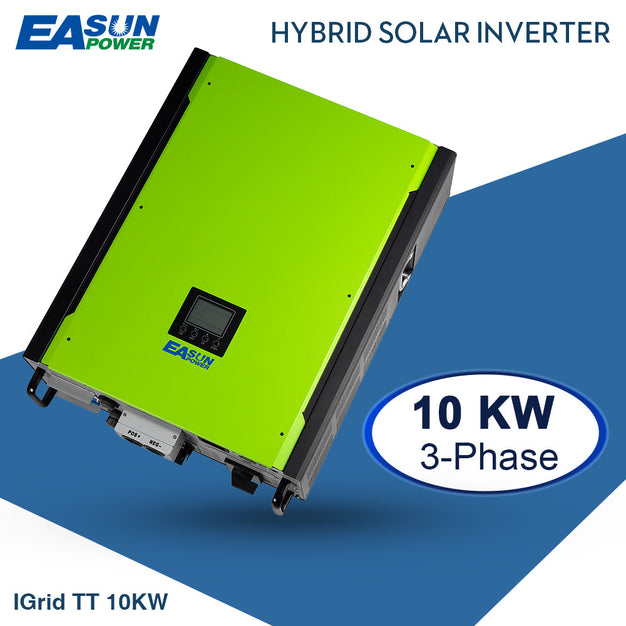Unleashing the Power of the Sun: Discover the Game-Changing Solar Inverters Transforming Renewable Energy!
In an era where climate change poses an imminent threat to our planet, the importance of renewable energy cannot be overstated. As we strive to reduce our carbon footprint and transition to sustainable energy sources, solar energy has emerged as a leading contender in the renewable energy landscape. Harnessing the sun's power not only helps in reducing greenhouse gas emissions but also provides a reliable and abundant energy source. However, to maximize the efficiency of solar energy systems, innovative solar inverters play a crucial role. These advanced devices are essential in converting the sunlight captured by solar panels into usable electricity, making them vital components in the journey towards a greener future.

Understanding Solar Inverters
Solar inverters are pivotal devices in any solar energy system, responsible for converting the direct current (DC) generated by solar panels into alternating current (AC) that can be utilized by household appliances and fed into the electrical grid. Without inverters, the energy harnessed from sunlight would remain unusable for most applications. There are mainly three types of solar inverters: string inverters, microinverters, and central inverters. String inverters are the most common, connecting multiple solar panels in a series to a single inverter, while microinverters are installed on each panel, allowing for individual panel optimization. Central inverters are typically used in larger installations and manage a large number of solar panels. Each type has its own advantages and limitations, making it essential to choose the right inverter based on the specific needs of the solar energy system.
Innovative Technologies in Solar Inverters
The solar inverter landscape is evolving rapidly, thanks to innovative technologies that enhance performance and functionality. One of the most exciting advancements is the development of smart inverters, which are equipped with advanced communication capabilities, allowing them to interact with the grid and other energy resources. These inverters can optimize energy production based on real-time conditions, ensuring maximum efficiency. Additionally, hybrid inverters have gained popularity, allowing users to integrate multiple energy sources, such as solar panels and battery storage, into a single system. This flexibility is critical for energy management and storage. Moreover, the integration of the Internet of Things (IoT) and artificial intelligence (AI) into solar inverters is transforming how we monitor and manage solar energy systems. IoT-enabled inverters provide remote monitoring and diagnostics, while AI algorithms can predict energy usage patterns, optimize performance, and even provide predictive maintenance alerts, ensuring the longevity and efficiency of solar installations.
Benefits of Innovative Solar Inverters
The benefits of innovative solar inverters are manifold, particularly in terms of efficiency improvements. By utilizing advanced technologies, these inverters can increase energy conversion rates, allowing homeowners and businesses to get more energy from the same solar panel setup. This translates into substantial cost savings on electricity bills. Furthermore, innovative solar inverters enhance energy management by enabling users to monitor their energy consumption in real-time, making it easier to optimize usage and reduce waste. Another crucial benefit is the contribution to enhanced grid stability. As renewable energy sources like solar become more prevalent, innovative inverters help manage the integration of these sources into the grid, ensuring a balanced supply and demand. This capability is vital as more people transition to solar energy, fostering a sustainable energy ecosystem.
The Future of Solar Inverters in Renewable Energy
Looking ahead, the future of solar inverters seems bright, with numerous trends and developments set to shape the landscape of renewable energy. One significant trend is the continued evolution of smart technology in inverters, which will likely lead to even greater efficiency and integration capabilities. As energy demands increase, the development of inverters that can seamlessly integrate with other renewable sources, such as wind and hydro, will become essential. Additionally, the rise of decentralized energy systems, where individuals generate and manage their own energy, will require advanced inverter technologies that support this model. Emerging technologies, such as blockchain for energy trading and peer-to-peer energy sharing, will also impact how solar inverters function within the grid. These advancements will not only accelerate the adoption of renewable energy but will also play a vital role in achieving global sustainability goals.
Innovative Solar Inverters: Driving the Future of Renewable Energy
In summary, innovative solar inverters are not just components of solar energy systems; they are the backbone of the renewable energy revolution. By maximizing energy efficiency, facilitating cost savings, and enhancing grid stability, these advanced devices are crucial in shaping a sustainable energy future. As we continue to explore and adopt solar technology, the potential for innovative solar inverters to drive this change cannot be underestimated. Staying informed about advancements in solar energy solutions is essential for anyone interested in contributing to a greener planet. The journey towards sustainability is ongoing, and innovative solar inverters will undoubtedly play a significant role in this transformation.








